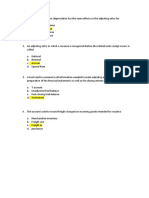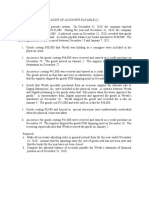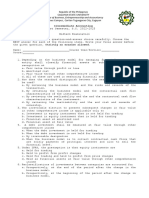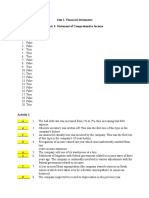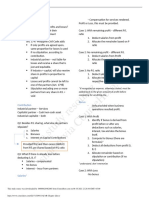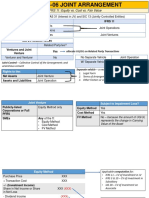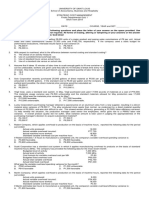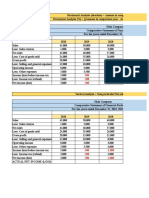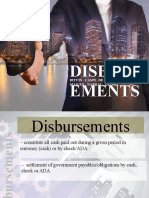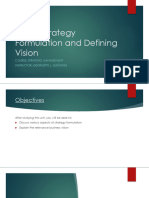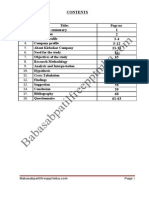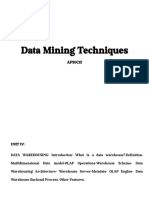0% found this document useful (0 votes)
265 views7 pagesQUIZ REVIEW Homework Tutorial Chapter 3
1. The cost per unit of Product A under the activity-based costing system for Matt Company is $6.60.
2. The predetermined overhead rate under the traditional costing system for Acton Company is $270.66.
3. The overhead cost per unit of Product B under the traditional costing system for Acton Company is $54.13.
Uploaded by
Cody TarantinoCopyright
© © All Rights Reserved
We take content rights seriously. If you suspect this is your content, claim it here.
Available Formats
Download as DOC, PDF, TXT or read online on Scribd
0% found this document useful (0 votes)
265 views7 pagesQUIZ REVIEW Homework Tutorial Chapter 3
1. The cost per unit of Product A under the activity-based costing system for Matt Company is $6.60.
2. The predetermined overhead rate under the traditional costing system for Acton Company is $270.66.
3. The overhead cost per unit of Product B under the traditional costing system for Acton Company is $54.13.
Uploaded by
Cody TarantinoCopyright
© © All Rights Reserved
We take content rights seriously. If you suspect this is your content, claim it here.
Available Formats
Download as DOC, PDF, TXT or read online on Scribd
/ 7
